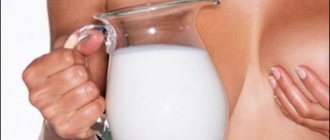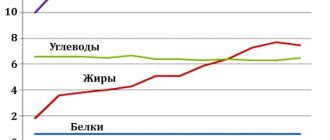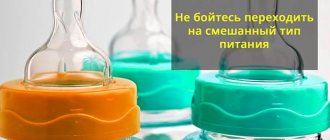There are some tricks when using sns:
– to reduce the flow, the bottle should be placed no higher than the level of the chest and the child; the lower the bottle with food, the more effort the baby must make to suck;
– in order to increase the flow of donor milk, it is necessary to open the second, non-working wire, after first lifting its end to prevent the loss of “liquid gold”;
– to simulate feeding with tides, you need to periodically close the working wire for a short time.
Also, when using this system, mothers sometimes encounter the following side effects and difficulties:
– irritation from the patch on the mother’s breast;
– baby’s refusal to breastfeed without breastfeeding;
– it’s difficult to insert the wire correctly the first time, and even if it seems like it’s slipped, it’s not a fact that it’s inserted correctly and the milk will flow, you have to take the breast and start all over again, which makes the children nervous.
Supplementary feeding of a newborn in the maternity hospital
After the birth of a child, in the first three days the mother secretes colostrum, the volume of which is only a few milliliters.
Due to its high calorie content and valuable biological properties, this is the irreplaceable food that a newborn needs and to which he is physiologically most adapted in the first days of his life. A small amount of food helps the baby to correctly master the techniques of sucking, swallowing and breathing during breastfeeding. After 2-3 days, the newborn loses weight in the amount of 5.5-6.6% of birth weight, but not due to lack of nutrition, but due to the child’s adaptation to living conditions that differ from the conditions of the prenatal period. All these features of the first days can confuse a young mother, causing her to doubt her ability to feed her child, and lead to the introduction of supplementary feeding. Therefore, it is important to understand when supplementary feeding in the maternity hospital is necessary and when it is not. In any case, the decision on supplementary feeding is made by the doctor, assessing each case individually after monitoring breastfeeding. No additional feeding is required.
- The child is sleepy. This is a normal occurrence after a baby wakes for the first time in its life. The next 10 hours include 1-2 periods of wakefulness with or without feeding. If the baby sleeps for a long time, it is better to wake him up by trying to breastfeed. Longer pauses between feedings require a larger volume of food for the baby, and this is problematic in the initial period of lactation. Therefore, it is better to try to feed more often than to give the baby supplementary food after a long sleep. The main rule in the first seven days: “The child is awake if he is hungry.”
- The child is healthy. Healthy, full-term infants with a bilirubin level of less than 18 mol/L after 72 hours of life, breastfeeding well, having regular bowel movements, and weight loss of less than 7%.
- Restless child. Even in case of very strong restlessness at night or many hours of wakefulness.
- The mother is tired or wants to sleep.
Absolute indications for prescribing supplementary feeding.
- Separation of child and mother due to maternal illness.
- The baby has diseases associated with the absorption of breast milk.
- The baby has developmental defects that prevent breastfeeding.
- Taking medications by the mother that are contraindicated during breastfeeding.
Relative indications for prescribing supplementary feeding
Testimony from the child Testimony from the mother
| A decrease in blood glucose levels without obvious symptoms (hypoglycemia), confirmed by tests and remaining unchanged after breastfeeding | Insufficient amount of milk five days after birth, caused by the remnants of the placenta in the uterus, after removal of which, lactation returns to normal. |
| Significant dehydration (weight loss greater than 10%, high sodium levels in the blood, lethargy), despite proper breastfeeding. | Insufficient milk supply due to Sheehan's syndrome. |
| Weight loss of 8-10% in an infant due to delayed milk production in the mother after five days. | Insufficient milk production by the mammary glands due to their underdevelopment (primary hypoplasia). |
| Retention of stool or passage of meconium after five days. | Impaired milk production due to previous surgical operations on the breast or pathologies of the mammary glands. |
| The child receives little milk, despite the mother having enough milk. | Acute pain during feeding that does not disappear after attempts to eliminate it. |
| Neonatal jaundice associated with insufficient breast milk supply or breast milk jaundice (bilirubin level 20-25 mol/l). | |
| If necessary, additional administration of micronutrients (vitamins, minerals, amino acids). |
Rules for introducing complementary foods.
Complementary foods should be introduced when the baby is healthy;
The introduction of complementary foods and new complementary foods cannot be combined with preventive vaccinations. This is explained by the fact that during diseases or reactions to vaccinations there is a significant decrease in the enzymatic activity of the digestive glands. At this time, the processes of enzymatic adaptation to new types of food are significantly hampered.
The first complementary food should be monocomponent;
Each type of complementary food is introduced gradually over 5-7 days, and in some cases for a longer period up to 10-12 days.
The product should be offered repeatedly, at least 8-10 times; an increase in positive perception of food occurs after 12-15 times.
Start introducing complementary foods with small amounts, gradually (from 1 teaspoon), since enzymatic adaptation to qualitatively diverse proteins (dairy, vegetable, meat) takes time and develops gradually, over 7-10 days. In the first days of introducing a new food, the fasting secretion of the stomach still lacks the ability of pepsin to completely digest the corresponding protein substrate. It manifests itself only at the end of the first or second week due to conditioned reflex effects on the secretion of pepsin during the “ignition” phase of juice secretion and the activation of digestive enzymes.
Complementary foods should be given before breastfeeding, starting with small quantities; in the morning, switch to another type of complementary food only after the child gets used to the first type.
Only one new dish can be introduced at a time to assess the child’s body’s reaction.
It is important to observe the principle of mechanical sparing. Food should be homogeneous (before the period when the child can chew food) and not cause difficulty in swallowing. As the child gets used to a new dish and grows older, you should move on to thicker food, teaching the child to eat from a spoon.
When prescribing complementary foods, it is necessary to monitor the quality of the child’s food, keep a record of the food actually eaten,, if necessary, calculate the intake of food ingredients per 1 kg of weight, and in case of deficiency, make the necessary correction.
Cottage cheese and yolk should be prescribed no earlier than 7 months of life, since early administration of foreign protein leads to allergization, damage to functionally immature kidneys, metabolic acidosis and dismetabolic nephropathy.
Meat broths have been removed from complementary foods because they contain a lot of purine bases, which leads to damage to functionally immature kidneys.
Puree soups are prepared using vegetable broths. Food should be lightly salted: the kidneys of an infant do not remove sodium salt from the body well. In industrially produced purees, the sodium content should not exceed 150 mg/100 g in vegetables and 200 mg/100 g in mixtures of meat and vegetables.
From 8 months, kefir or other fermented milk mixture can be prescribed as complementary foods. Unreasonable widespread use of kefir as complementary foods in the first months of life can cause acid-base imbalance, acidosis in the child and create additional stress on the kidneys. It is not recommended to dilute cottage cheese with kefir, as this sharply increases the amount of protein consumed. Cottage cheese should be used with fruit or vegetable puree.
Before 4 months, the child’s body is not physiologically prepared to accept new dense foods. And it is undesirable to start later than six months, as problems may arise with adaptation to food with a denser consistency than milk. Therefore, according to most experts in the field of baby nutrition, the first complementary foods should be introduced between 4 and 6 months of life. With artificial feeding, you can start complementary feeding from 4.5 months, with breastfeeding - from 5–6 months. Remember that the timing of introducing complementary foods varies from person to person.
Insufficient energy and nutrient supply from breast milk alone can lead to growth retardation and malnutrition; due to the inability of breast milk to meet the baby's needs, micronutrient deficiencies, especially iron and zinc, may develop; The optimal development of motor skills, such as chewing, and the child's positive perception of new tastes and textures of food may not be ensured.
Therefore, complementary feeding should be introduced at the right time, at the appropriate stages of development.
1 complementary food - 5 months.
2 complementary foods - 6 months.
3 complementary foods - 8 months.
Mixed feeding is called feeding in which the share of infant formula does not exceed 50%, and more than half of the child’s daily diet comes from breast milk. One of the integral components of such a nutrition system is supplementary feeding, which will be discussed below.
Advantages of SNA
If you carefully study all the advantages of the supplementary feeding device, it is easy to see that there are many advantages.
Among the most important advantages of mothers feeding their baby with the help of SNS are:
- without much difficulty it is possible to introduce complementary foods into the child’s diet;
- The device can be used repeatedly;
- thanks to regular stimulation of the female breast, more milk is produced;
- the baby gets excellent breastfeeding training due to the artificially created vacuum;
- maternal instincts are supported and stimulated;
- A bond is established between mother and baby.
Another advantage of using the SNS is that it is recommended to use the device for feeding adopted infants.
Tips for nursing mothers about SNS
What tips can help a nursing mother when using breastfeeding systems?
1) In order for the breasts to receive good stimulation, it is desirable that feeding lasts at least 20-40 minutes.
Therefore, before inserting the tube, achieve a deep latch on the breast and make sure that the flow of milk or formula from the tube is not too fast.
How to achieve this? By raising the supplement bottle higher, you speed up the flow, and by lowering it below breast level, you slow it down. Also, some systems are sold with three sizes of tubes, thanks to which you can slow down or increase the flow rate.
2) Exactly the same strategies can be used when weaning a child from the supplementary feeding system, if the amount of breast milk has increased or the baby is already 6 months old and receives sufficient complementary foods.
3) Try lowering the height of the bottle to slow down the flow of milk from the straw. Also try to do some feedings without using a tube, for example in the morning when there is a lot of milk.
Real stories of nursing mothers from SNS
“As I already wrote to you, I have vision problems, so I cannot feed the baby with a spoon or syringe on my own, my relatives help. When supplementary feeding was introduced at each feeding, I began to bottle feed, since there was no other choice. I read that there is also such a feeding method as the SNS (supplementary feeding system) - as I understand it, this is a bottle that hangs on the mother’s neck and a thin capillary extends from it, which is fixed next to the nipple, the baby grabs both the breast and it, judging by the reviews This device almost eliminates the possibility of the baby refusing to breastfeed. I have not yet found such a device in our city. Tell me, how do you feel about this method of supplementary feeding?”
In general, I feel good about it, although this system is not universal and cannot be recommended in all cases.
“I tried finger feeding with the SNS system. I ate well for two days, then a scandal with refusal began.” “A week ago I completely gave up breastfeeding. Arches, screams, etc. I bought an additional system. feeding SNS - I took 2 naps and that’s it.” “He began to refuse to breastfeed due to supplemental feeding from a bottle, he does not always suckle when the milk in the breast comes to an end, and he quits with irritation. Sometimes the breast immediately drops, without waiting for the tide to flow, and the milk becomes less. I read the comments, bought SNS, but I can’t get it to work. Help me please!"
It is possible to return the baby to the breast, but a lot depends on the volume of formula and the age of the child - it may not be so easy. The SNS system is only suitable if there is no breast refusal, otherwise a cup or a special spoon is better.
“At first we alternated between breastfeeding and formula (we bought a special bottle - imitation of a nipple, dosage of droplets according to age) - the milk began to decrease with such feedings. And gradually my son gave up breastfeeding completely during the day. With screams and tears, we finally weaned ourselves off the bottle. I read about such a supplementary feeding system - using a thin tube, one end of which goes into the baby’s mouth, and the other into a bottle with formula. And for two weeks now we have been eating like this - “breast formula”, 90 grams every 2.5-3 hours. Breast without formula refuses to take. Several times I tried to give only the breast, but there was no effect - she would scream, suck for 3 minutes and fall asleep. Tell me, is it even worth abusing a child like that - trying to renew breastfeeding?”
The situation is complicated. This is not the first time I have encountered the problem of children’s dependence on the SNS supplementary nutrition system, although it is designed to help establish breastfeeding. It is definitely possible to return the baby to the breast, but it will not be possible without tears.
I suggest you give up SNS and switch to supplemental feeding with spoon-fed formula. Give the mixture in equal volumes in quantities of no more than 60 grams at a time. Offer breasts at your request no more than once an hour, mainly after supplementary feeding and after rocking to sleep. If she starts crying, close her chest and distract her.
Plus, the following conditions must be observed for at least the first week: 1) no walks and guests, no visits to doctors 2) skin-to-skin contact with the child 3) gradual abolition of the pacifier 4) sleeping together and bathing together in a large bathtub.
“I had to give up breastfeeding for a month, I want the milk back. There is a feeding system. Is it possible to increase lactation using a breast pump (there are two available) or are they only intended for expressing?
Yes, you can increase your lactation with a breast pump, both of yours are good. You need to pump regularly every 3 hours for 10-15 minutes on each breast. If you have two breast pumps, you can express at the same time, if possible. It makes sense to use the SNS feeding system if the baby is breastfeeding. That would be great. You will be able to supplement and stimulate your breasts at the same time. I would recommend that you contact one of the consultants in your city (see am-am.info/consult) and work with him, this will increase efficiency. You will succeed, at this age it is quite possible!
“The colostrum arrived only on the 9th day - there was an urgent operation to stop the bleeding. Now the milk is flowing drop by drop, I have slowly taught the baby to take the breast, but he only sucks if I put on the SNS at the same time. What to do?"
You can stimulate lactation by pumping for 15 minutes on each breast every 3 hours. And you should also give up SNS. Indeed, it happens that this system leads to addiction and then the child does not want to suckle at the breast without a tube. Try breastfeeding without a tube every hour, and supplementary feeding from a cup every 3 hours. Write about your successes!
Here are more real stories that were discussed on our forum. As you can see, some children leave the supplementary feeding system without any problems, while other children become very attached to it...
How to make it yourself
The supplementary feeding system is so simple that it is recommended to do it yourself. To make it, you will need a regular bottle from which babies are fed, and a catheter used in medicine for intragastric feeding (a transparent thin tube made of silicone with holes at the ends). Be sure to purchase a quality pacifier.
Step-by-step production of the system:
- Make a hole in the nipple; the hole should not exceed the diameter of the catheter.
- Place the tube into the bottle, be sure to use the end on which the fixative is located.
- Use a medical plaster to attach the second end of the tube to the female breast.
The system, made by yourself, is completely ready for feeding the baby, and is in no way inferior in efficiency to expensive devices offered at the pharmacy. It is not recommended to use other components to make the device - experiments can lead to a complete refusal of the baby to eat this way.
This will immediately affect growth and development; a child who does not receive enough nutrients will quickly lose weight.
There is only one way to prevent mistakes - by fully following medical recommendations and using the experience of other mothers who have already been convinced of the effectiveness of a simple device made by themselves.
Methods of supplementary feeding
What is the best way to supplement your baby's feeding? The first thing that comes to mind is using a simple baby bottle. However, there is a danger that the baby will get used to a more convenient method of feeding and refuse the breast.
There are more correct ways to introduce supplementary feeding:
- Spoon. You can use a regular small spoon, but it is better to give preference to special baby spoons made of soft silicone. It is necessary to fill such a spoon with a few drops of the mixture, and then pour it over the baby’s cheek.
- Pipette. Used when we are talking about small portions of the mixture. It is best to use special children's pipettes with a rounded tip. The principle of operation is the same as in the first case: a small amount of the mixture is taken into a pipette and carefully injected into the baby’s cheek.
- Children's cup. This method is useful if the baby requires a fairly large amount of formula. Pay attention to the size of the cup; it should be small enough and made of safe material. The cup with the mixture is brought to the baby’s lower sponge, slightly wetting it. The baby begins to make sucking movements with his lips and tongue.
- SNS system. It is a design made of a soft silicone bottle, which is placed around the mother’s neck, and a long thin tube, which is attached in close proximity to the nipple. During such feeding, the baby grasps not only the nipple, but also this tube with his lips, receiving both breast milk and formula at the same time.
Introduction of supplementary feeding in case of lack of breast milk
Depending on the amount of milk that the child does not receive, supplementary feeding can be prescribed immediately or after additional measures to stimulate lactation.
Lack of milk 25-50% of normal. Supplementary feeding is prescribed only after additional measures to increase lactation. To do this, over a period of 3-4 days, the baby is latched more frequently to the breast, and if this does not help, the baby is fed alternately from both breasts at one feeding. Only after all possibilities for restoring lactation have been exhausted, supplementary feeding is prescribed after 7 days.
Milk deficiency is up to 75% or higher. Supplementary feeding is prescribed immediately, but at the same time measures are taken to restore lactation.
Thus, in all cases, supplementary feeding is only a temporary measure that provides the opportunity for breastfeeding in the future.
The amount of supplementary feeding should compensate for the lack of breast milk. In this case, intermediate control is periodically carried out, since once a certain amount of supplementary feeding is gradually changed up or down. Increased if measures to restore breastfeeding give a negative result and decreased if positive. Accordingly, if control is not carried out, over time, overfeeding or underfeeding of the child may occur.
What problems can it cause?
Despite the many positive qualities of the supplementary feeding system, it often happens that women using the device to feed their baby encounter some difficulties. Among the disadvantages is the child’s refusal to feed in the future without the use of SNS.
It is almost impossible to cope with a baby’s habit, so you have to give up trying to accustom your baby to mother’s milk, which is obtained without any device.
Another drawback that women note is that difficulties often arise when trying to properly insert the tube into their child.
It turns out that in the absence of dexterity and experience, not everyone can do this, so you have to repeat the process several times. This causes irritation in the baby, and he is able to refuse feeding altogether.
If a reservoir of supplemental mixtures is attached to a woman's breast, the patch often leaves behind red marks or irritation.
On sensitive skin prone to irritation, a profuse rash often appears. In such cases, you have to use a tripod to support the container or temporarily abandon the use of the system.
What products are used for supplementary feeding?
The composition for supplementary feeding of newborns should be as close as possible to breast milk. It is not difficult to purchase a high-quality product adapted to the needs of a baby - on store shelves there is a sufficient assortment of domestic and foreign baby food that can be offered to the baby from birth.
Milk from domestic animals - cows or goats - is not currently used in pediatrics. These foods have been proven to negatively affect a child’s immune system, digestive tract, and kidneys. There is also a risk of the baby becoming infected with Brucella and other pathogenic flora, which can be transmitted from sick animals. Supplementing a newborn with formula eliminates this possibility.
How to determine lack of breast milk
If in the case of absolute contraindications to supplementary feeding everything is clear, then in the case of relative contraindications the question arises about the amount of breast milk or colostrum that the child does not get. The first thing to do is make sure that there really is not enough power. Several methods are used for this:
- counting the amount of urine;
- counting the number of urinations;
- expected increase method;
- weighing before and after feeding;
- weekly increment method;
- "intuitive" method.
Read the article for more details about these methods.
Calculation of the amount of milk that a child should eat at one feeding can also be carried out using several methods, which can take into account not only the age, but also the weight and health status of the child. Read more about them in the article. The difference between the norm and the milk actually consumed by the child will be the amount of supplementary feeding that the child needs.
Which mixture should you choose?
Dr. E. O. Komarovsky says about supplementary feeding with formula during breastfeeding that not a single formula, even the best one, can replace mother’s milk. At the same time, not a single, even the most natural and pure cow's milk can compare with adapted infant formula. And most pediatricians agree with this opinion. Therefore, when introducing supplementary feeding, it is very important to choose the right product.
Of course, this issue must be discussed with the pediatrician observing the child. After all, the composition of mixtures of a particular brand may be different. Thus, premature babies need a more nutritious formula, enriched with an increased amount of vitamins and microelements.
Babies suffering from anemia should receive a formula with a high iron content, and children with tummy problems are recommended to have a product with probiotics in its composition.
It is important to take into account the age of the baby. Determining which formula is suitable for a particular age is very simple: on the packaging of the product there is usually a digital marking indicating which children this mixture is suitable for.
Choice of supplementary food
The best solution is to use expressed breast milk. At the beginning of lactation, it is better to express by hand, as it is more effective and can increase milk production. Read the article about the rules for expressing milk. Fortifiers will help to additionally enrich breast milk with useful components for premature and low birth weight babies.
The situation is more complicated with colostrum, which is secreted very little and is difficult to collect. In this case, it is optimal to use pasteurized donor milk.
Among artificial formulas, the best ones for supplementary feeding are those based on protein hydrolysates, as they reduce the risk of allergic reactions and bilirubin levels.
Sources
- https://MilkMama.info/info/26/
- https://topotushky.ru/pitanie/grudnoe-vskarmlivanie/dokorm-deteji.html
- https://grudnichky.ru/pitanie/sistema-dokorma-u-grudi.html
- https://am-am.info/sns-sistema-pitaniya-okolo-grudi-plyusy-i-minusy/
[collapse]










